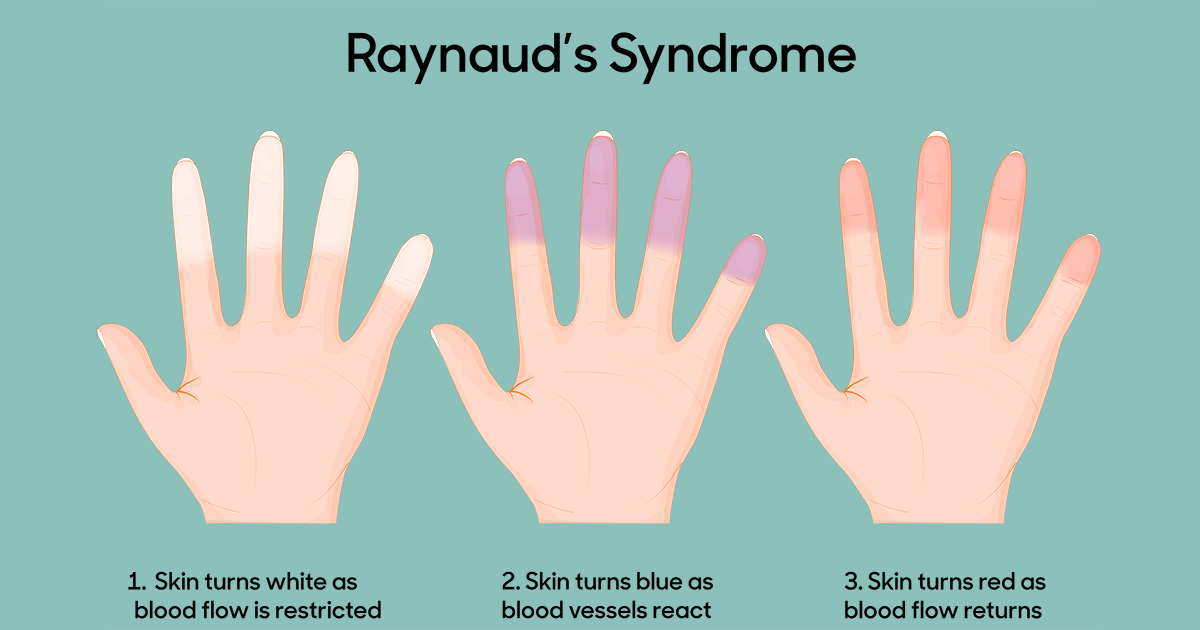Raynaud’s Phenomenon

Raynaud’s phenomenon is a condition that affects the blood vessels in the fingers, toes, ears, and nose, causing them to spasm and constrict. This reduces blood flow to these areas and can cause them to turn white or blue and feel numb or painful.
Symptoms
Symptoms can vary from one person to another, but they typically include:
1. Fingers or toes that turn white or blue in response to cold or stress.
2. Numbness or tingling in the fingers or toes.
3. Pain or throbbing in the affected areas.
4. Swelling or redness in the affected areas as blood flow returns
Causes
The exact cause of Raynaud’s phenomenon is not known, but it is thought to be related to an overreaction of the blood vessels to cold temperatures or stress. Some factors that can trigger Raynaud’s phenomenon include:
- Cold temperatures
- Stress or anxiety
- Smoking
- Certain medications
- Repetitive actions such as typing or playing an instrument.
- Certain medical conditions such as autoimmune diseases or arterial diseases.
There are two types of Raynaud’s phenomenon:
1. Primary Raynaud: This is the most common type and occurs without an underlying medical condition. It is often referred to as Raynaud’s disease.
2. Secondary Raynaud’s phenomenon: this type occurs as a result of an underlying medical condition, such as autoimmune disease or arterial disease.
Complications
- Skin sores or ulcers in severe cases reduced blood flow to the fingers or toes can cause skin sores or ulcers that are slow to heal.
- In rare cases, severe cases of gangrene can lead up to gangrene, a condition in which the tissue dies due to lack of blood flow.
How do I treat it?
There is no cure for Raynaud’s phenomenon, but there are several treatment options that can help manage symptoms and prevent complications. These may include:
1. Keeping warm: avoiding cold temperatures and wearing warm clothing can help reduce the likelihood of Raynaud’s attacks.
2. Lifestyle changes: Quitting smoking, reducing stress, and avoiding repetitive actions can help reduce the frequency and severity of Raynaud’s attacks.
3. Medications: certain medications, such as calcium channel blockers and vasodilators, can help relax the blood vessels and improve blood flow
4. Surgery: In severe cases surgery may be necessary to improve blood flow to affected areas
How do I prevent it?
While it may not be possible to prevent Raynaud’s phenomenon entirely, there are steps that can be taken to reduce the risk of developing the condition or experiencing the symptoms.
Here are some tips to help prevent Raynaud’s phenomenon:
1. Avoid cold temperatures and dress warmly can help reduce the likelihood of Raynaud’s phenomenon. Wear warm clothing particularly on your hands, feet, ears, and nose when going outside in cold weather.
2. Finding ways to manage stress such as exercise and relaxation techniques may be helpful.
3. Quit smoking.
4. Avoid certain medications such as beta-blockers (Talk to your doctor about any medication that you are taking and whether they may be contributing to your symptoms!)
5. Exercise to help improve circulation and reduce the risk of Raynaud’s attacks.
6. Avoid repetitive actions and try to take frequent breaks and stretch your hands and fingers regularly.